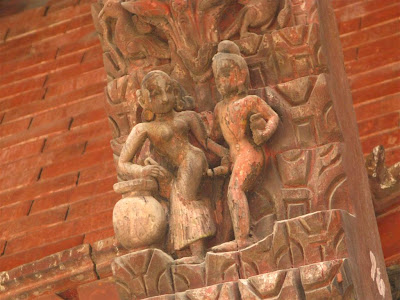So, staying in Ghorka, I not only drank some bad water ("Is this water boiled," I asked. "No. It's purified. No problem!" I was told.), but also chipped a tooth on a bone shard in a momo full of secret buffalo meat. Surprise!
For the tooth, I went back to the DentInn, in Kathmandu (http://www.dent-inn.com/). They recommended removing an old filling and re-filling the whole thing for overall strength of the tooth. I thought this sounded reasonable, but was quite a procedure: anaesthetic injection, drilling, and filling. My mouth was full of tools for what I thought would be a simple solution, and the dental assistant was rather absent minded, looking away from time to time, allowing the vacuum suction to slip around my mouth and throat. It seems to have been a well done procedure, though the overall professionalism and careful practice was slightly lacking.
Then I went to a doctor (www.ciwec-clinic.com -- near the English and Indian Embassies) to deal with a diarrhea problem--turned out to be bacteria not cholera or dysentery, thank goodness. Though if I thought the poo problem was bad, the cure was much worse. I was offered Ciprofloxacin, an anti-biotic, to take twice daily for three days. At first, it was not bad, but by the third day I was experiencing a gamut of side-effects:
I've had a rash over large parts of my body, dizziness, *severe headache, sleeplessness, frequent urination, dehydration, muscle aches all over, some stomach ache, eye pain, confusion, fever and lethargy. Last night all of these ganged up on me and I had a really long night, and many of these effects are persisting into the day, though I have finished the meds this morning. I hope to be well again tomorrow...
If you plan to take this medication, think carefully and make sure you have somewhere comfortable where you can rest, because if my experience is an indication, you will become very uncomfortable.
Here are some websites to read:
http://www.askapatient.com/viewrating.asp?drug=19537&name=CIPRO&page=1
http://www.westonaprice.org/healthissues/cipro.html
Kathmandu is such an innapropriate place to recover from illness. Car horns, touts, pollution, a garbage crisis in the streets, dogs, noise, heat... Maybe sometime I'll come here feeling really well and have a great time. Though I was in Bhodnath yesterday; that seems like a place to stay for a few days. Pictures soon.












































